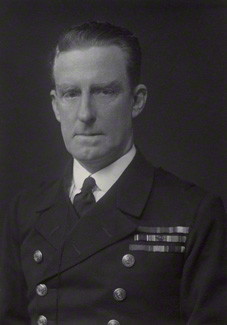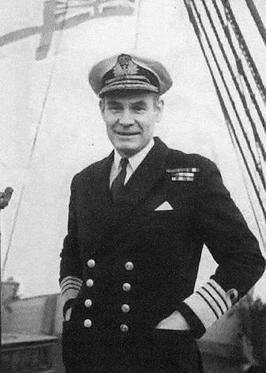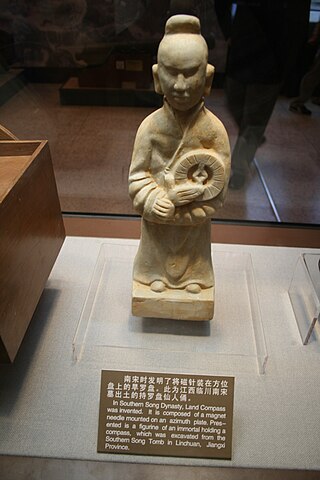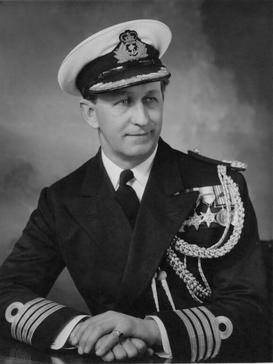
Sir Francis Beaufort was an Anglo-Irish hydrographer, the creator of the Beaufort cipher and the Beaufort scale, and a naval officer.

The British Mediterranean Fleet, also known as the Mediterranean Station, was a formation of the Royal Navy. The Fleet was one of the most prestigious commands in the navy for the majority of its history, defending the vital sea link between the United Kingdom and the majority of the British Empire in the Eastern Hemisphere. The first Commander-in-Chief for the Mediterranean Fleet was the appointment of General at Sea Robert Blake in September 1654. The Fleet was in existence until 1967.

Admiral of the Fleet William Henry Dudley Boyle, 12th Earl of Cork and 12th Earl of Orrery, was a British Royal Navy officer and peer. He served as a junior officer on the China Station during the Boxer Rebellion and went on to serve in the First World War initially as a staff officer during the Dardanelles Campaign and as then commander of the Red Sea Patrol: in that capacity, he led a six-day bombardment of the Turkish held port of Jeddah and worked closely with T. E. Lawrence in support of the Arab Revolt. In the inter-war years he was Commander-in-Chief, Reserve Fleet, President of the Royal Naval College, Greenwich and Commander-in-Chief of the Home Fleet. After succeeding a cousin and becoming Earl of Cork in 1934, he became Commander-in-Chief, Portsmouth.

Captain Alexander Hood was an officer of the Royal Navy, one of several members of the Hood family to serve at sea, including his brother Sir Samuel Hood, who were both sponsored into the Royal Navy by their cousins once removed, Viscount Hood and Alexander Hood.
Admiral of the Fleet Sir David Benjamin Bathurst, is a former Royal Navy officer. He is the only living person, apart from King Charles III, holding the rank of Admiral of the Fleet in the Royal Navy since the death of Lord Boyce. After training as a pilot and qualifying as a helicopter instructor, Bathurst commanded a Naval Air Squadron and then two frigates before achieving higher command in the navy. He served as First Sea Lord and Chief of the Naval Staff from 1993 to 1995: in that capacity he advised the British Government on the deployment of Naval Support including Sea Harriers during the Bosnian War.

Admiral of the Fleet Terence Thornton Lewin, Baron Lewin, was a Royal Navy officer. He served in the Second World War and then commanded a destroyer, the Royal yacht, two frigates and an aircraft carrier before achieving higher command. He was First Sea Lord and Chief of the Naval Staff in the late 1970s and in that role he worked hard to secure a decent wage for servicemen and helped win them a 32% pay rise. He went on to be Chief of the Defence Staff during the Falklands War, serving as chief war planner and as Prime Minister Margaret Thatcher's chief advisor during the war. He was also the first Chief of Defence Staff to act as head of the Armed Forces rather than just Chairman of the Chiefs of Staff Committee.
Christopher Middleton was a British navigator with the Hudson's Bay Company and Royal Navy officer. He was elected a Fellow of the Royal Society on 7 April 1737.

Admiral of the Fleet Sir John Henry Dacres Cunningham was a Royal Navy officer. A qualified senior navigator, he became Director of Plans at the Admiralty in 1930. He saw action as Commander-in-Chief of the Mediterranean Fleet during the Second World War with responsibility for the allied landings at Anzio and in the south of France. He served as First Sea Lord in the late 1940s: his focus was on implementing the Government's policy of scrapping many serviceable ships.
Rear Admiral John Richard Hill was a rear-admiral in the Royal Navy, a former chief executive of the Middle Temple, author, and editor of many books on naval affairs.

The Scilly naval disaster of 1707 was the loss of four warships of a Royal Navy fleet off the Isles of Scilly in severe weather on 22 October 1707. Between 1,400 and 2,000 sailors lost their lives aboard the wrecked vessels, making the incident one of the worst maritime disasters in British naval history. The disaster has been attributed to a combination of factors, including the navigators' inability to accurately calculate their positions, errors in the available charts and pilot books, and inadequate compasses.
Vice Admiral Sir William Munro Kerr was a Royal Navy officer who served as First Naval Member and Chief of the Australian Naval Staff from 1929 to 1931.

Sea turtle migration is the long-distance movements of sea turtles notably the long-distance movement of adults to their breeding beaches, but also the offshore migration of hatchings. Sea turtle hatchings emerge from underground nests and crawl across the beach towards the sea. They then maintain an offshore heading until they reach the open sea. The feeding and nesting sites of adult sea turtles are often distantly separated meaning some must migrate hundreds or even thousands of kilometres.

Sir Frederick John Owen Evans, was an officer of the Royal Navy. He became a distinguished hydrographer during his career and served as Hydrographer of the Navy.

The Admiralty Compass Observatory was a department of the British Royal Navy. It was established in 1842 to provide the Royal Navy with services for the design, development, inspection, testing and repair of compasses and certain other instruments. It subsequently undertook requirements for the other services as appropriate. Lord Kelvin is said to have called it 'the Temple of Accuracy'.

The compass is a magnetometer used for navigation and orientation that shows direction in regards to the geographic cardinal points. The structure of a compass consists of the compass rose, which displays the four main directions on it: East (E), South (S), West (W) and North (N). The angle increases in the clockwise position. North corresponds to 0°, so east is 90°, south is 180° and west is 270°.

John Ronald Gower was a captain in the Royal Navy who fought in the Second World War. He took part in several naval actions including the evacuation from Dunkirk, the attack on the German battleship Tirpitz and the Normandy landings, where his ship covered the troops landing on Sword beach. In the post-war period he commanded the destroyer HMS Diana when it carried out experiments in waters contaminated by the nuclear fallout of two nuclear explosions in Operation Mosaic, and when it sank the Egyptian frigate Domiat in the Red Sea on 1 November 1956.
William Westcott Rundell, sometimes W W Rundell was an inventor and engineer from Stoke Damerel in Devon. He is best known for his work on the magnetism, particularly of adjustment needed for compasses on iron ships. He also campaigned for the better training of ships crews.
David Watkin Waters was a British naval officer, historian of navigation, and naval historian, who served as deputy director of the National Maritime Museum, Greenwich, 1971–1978.

Vice-Admiral Sir John Augustine Edgell, KBE, CB, FRS was an officer in the Royal Navy and Hydrographer of the Navy from 1932 to 1945. He was noted for his support for innovations such as echo sounding and radio navigation, for the surveying and chart production operations of his department during World War II, and for his advocacy of the science of oceanography

Charles Frederick Des Voeux was an Irish officer in the British Royal Navy. He served as mate aboard HMS Erebus during the 1845 Franklin Expedition which sought to chart the Canadian Arctic, including the Northwest Passage, and make scientific observations. All personnel of the expedition, including Des Voeux, died in what is now Nunavut, Canada in uncertain circumstances. He and Graham Gore signed and deposited the Victory Point Record, one of the only official communications of the expedition yet found.















